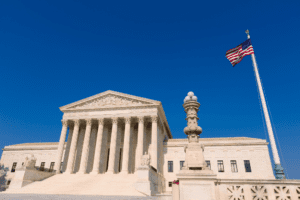 Justice Breyer continued: Firearm-related homicides and assaults are significantly more common in urban areas than rural ones. For example, from 1999 to 2016, 89.8% of the 213,175 firearm-related homicides in the United States occurred in “metropolitan” areas. M. Siegel et al., The Impact of State Firearm Laws on Homicide Rates in Suburban and Rural Areas Compared to Large Cities in the United States, 1991–2016, 36 J. Rural Health 255 (2020); see also Brief for Partnership for New York City as Amicus Curiae 10; Kaufman 237 (finding higher rates of fatal assault injuries from firearms in urban areas compared to rural areas); C. Branas, M. Nance, M. Elliott, T. Richmond, & C. Schwab, Urban-Rural Shifts in Intentional Firearm Death: Different Causes, Same Results, 94 Am. J. Pub. Health 1750, 1752 (2004) (finding higher rates of firearm homicide in urban counties compared to rural counties).
Justice Breyer continued: Firearm-related homicides and assaults are significantly more common in urban areas than rural ones. For example, from 1999 to 2016, 89.8% of the 213,175 firearm-related homicides in the United States occurred in “metropolitan” areas. M. Siegel et al., The Impact of State Firearm Laws on Homicide Rates in Suburban and Rural Areas Compared to Large Cities in the United States, 1991–2016, 36 J. Rural Health 255 (2020); see also Brief for Partnership for New York City as Amicus Curiae 10; Kaufman 237 (finding higher rates of fatal assault injuries from firearms in urban areas compared to rural areas); C. Branas, M. Nance, M. Elliott, T. Richmond, & C. Schwab, Urban-Rural Shifts in Intentional Firearm Death: Different Causes, Same Results, 94 Am. J. Pub. Health 1750, 1752 (2004) (finding higher rates of firearm homicide in urban counties compared to rural counties).
JUSTICE ALITO asks why I have begun my opinion by reviewing some of the dangers and challenges posed by gun violence and what relevance that has to today’s case. Ante, at 2–4 (concurring opinion). All of the above considerations illustrate that the question of firearm regulation presents a complex problem—one that should be solved by legislatures rather than courts. What kinds of firearm regulations should a State adopt? Different States might choose to answer that question differently. They may face different challenges because of their different geographic and demographic compositions. A State like New York, which must account for the roughly 8.5 million people living in the 303 square miles of New York City, might choose to adopt different (and stricter) firearms regulations than States like Montana or Wyoming, which do not contain any city remotely comparable in terms of population or density. See U. S. Census Bureau, Quick Facts: New York City (last updated July 1, 2021) (Quick Facts: New York City), https:// www.census.gov/quickfacts/newyorkcitynewyork/; Brief for City of New York as Amicus Curiae 8, 22.
For a variety of reasons, States may also be willing to tolerate different degrees of risk and therefore choose to balance the competing benefits and dangers of firearms differently. The question presented in this case concerns the extent to which the Second Amendment restricts different States (and the Federal Government) from working out solutions to these problems through democratic processes. The primary difference between the Court’s view and mine is that I believe the Amendment allows States to take account of the serious problems posed by gun violence that I have just described. I fear that the Court’s interpretation ignores these significant dangers and leaves States without the ability to address them.
Justice Breyer makes good points here. The flip-side to his analysis about “democratic processes”, however, is that there is still a concern for tyranny of the majority. That is to say, measures that violate the Constitution should not even be put to a vote. That’s because the Constitution is the Supreme Law of the land and we do not want to permit a majority of voters to undermine our basic principles.
